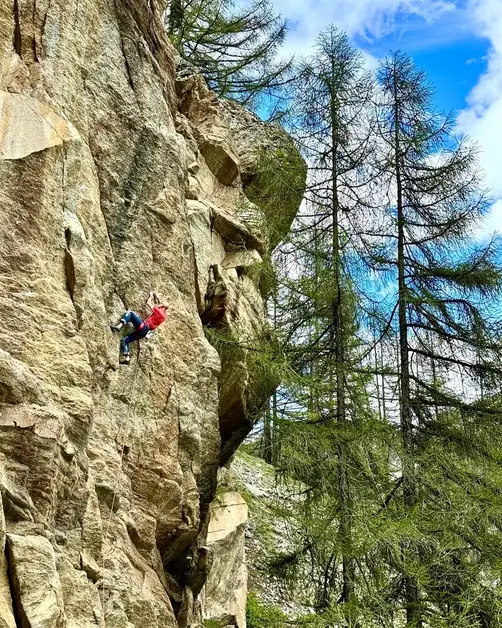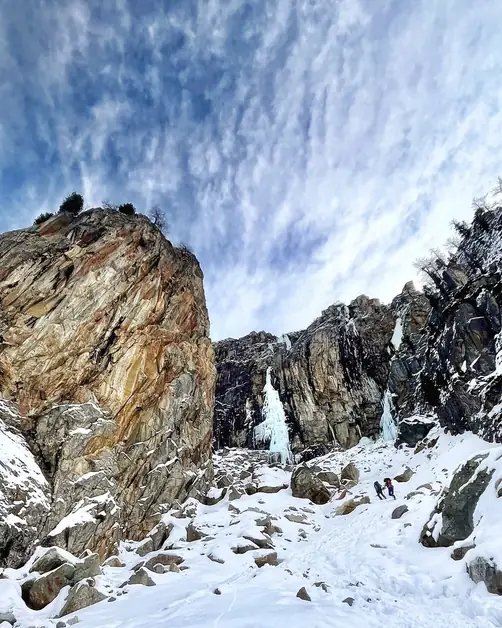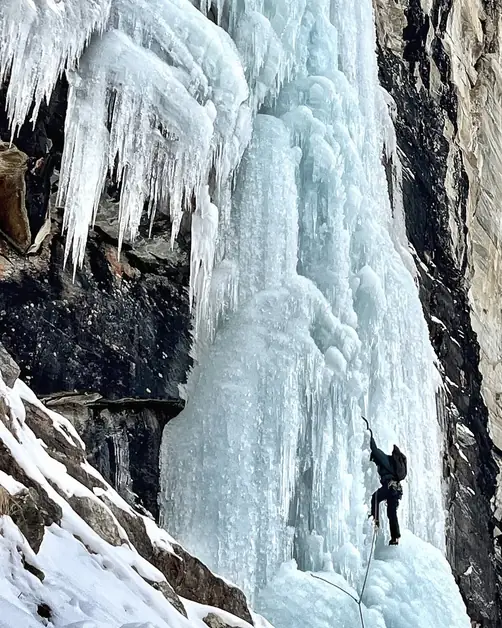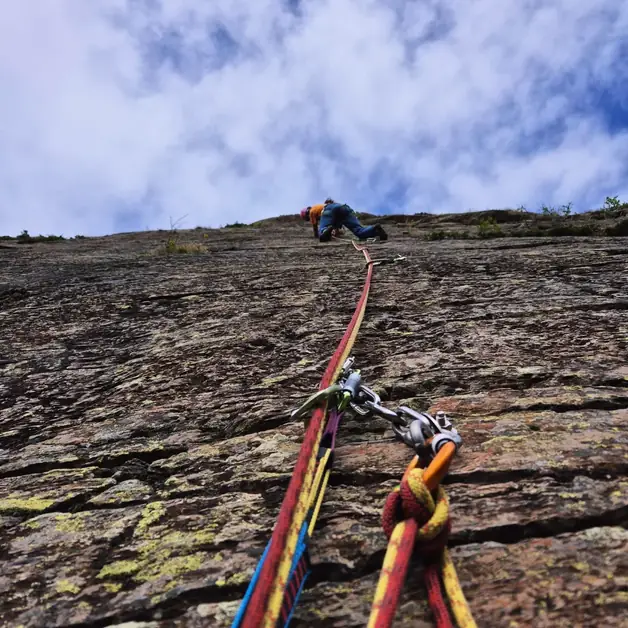The meaning of ribbons and flowers on cows
Discover the meaning of ribbons and flowers on cows at the Devétéya of Cogne, symbols of tradition and identity.
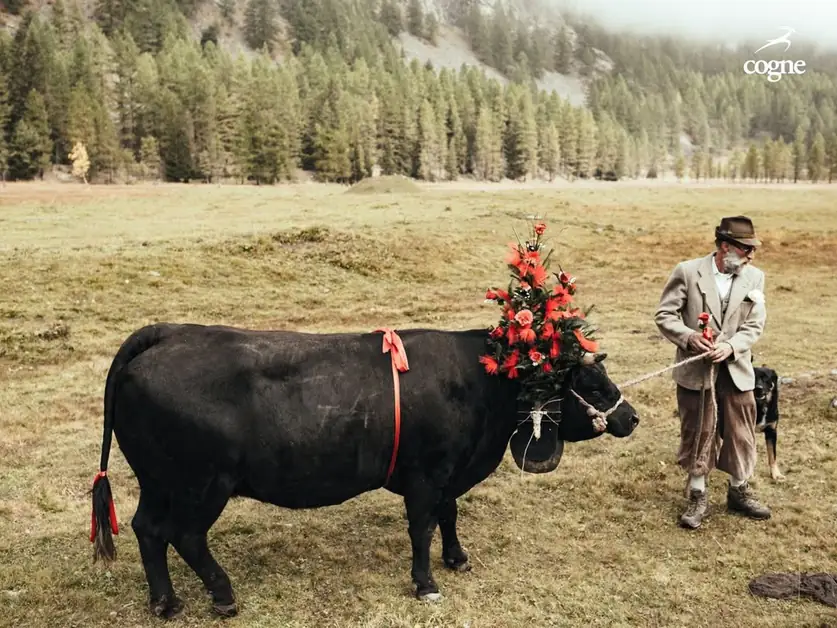
What does the bosquet of the Devétéya mean?
The bosquet is a decoration made of flowers, ribbons, and green branches that is fixed to the horns of cows. Each bosquet is carefully prepared by the owners and has a precise meaning. Tradition dictates that not all cows have the same decoration: only those that have distinguished themselves during the summer in the alpine pastures receive a special bosquet.
What does the white bosquet mean at the Devétéya of Cogne?
The white bosquet is the symbol of the "queen of milk". This decoration rewards the cow that produced the most milk during the summer season. For breeders, it is a great pride, as the productivity of the animal also represents the quality of the work done in the alpine pastures.
What value does the red bosquet have at the Devétéya?
The red bosquet indicates the "queen of horns". In this case, it is not the quantity of milk produced that counts, but the strength of the animal. The title is awarded to the cow that has prevailed in natural fights with other cows, showing character and resilience.
Why are cows decorated with flowers and ribbons during the Devétéya?
The decorations are not just an aesthetic element. The colorful flowers and ribbons have a symbolic function: they serve to celebrate the animal and to show it to the community as an example of strength or productivity. The Devétéya thus becomes a moment of public recognition for the cows and their breeders.
Is the Devétéya of Cogne just an agricultural festival?
No, the Devétéya is not just an agricultural event. It is a community festival that involves tourists, residents, and breeders. During the day of the return of the herds, the streets of the village come alive with songs, dances, markets of typical products, and tastings.
Where does the tradition of the bosquet in Cogne come from?
The tradition has its roots in the peasant culture of the Aosta Valley. Breeders have always had the habit of decorating animals during solemn moments to distinguish the strongest or most productive ones. Over time, this gesture has transformed into a true ritual, becoming one of the most recognizable symbols of the Devétéya.
Why are tourists fascinated by the bosquet?
Those who visit Cogne during the Devétéya are struck by the vibrant colors of the decorations. The bosquet is very photogenic and attracts the attention of those who love to take authentic photos related to alpine tradition. Furthermore, knowing the meaning of the bosquet allows visitors to better understand the spirit of the festival and the deep bond between man and nature.
Besides the bosquet, what other symbols characterize the Devétéya?
Besides the ribbons and flowers, an essential element is the bell hung around the cows' necks. The sound of the bell accompanies the parade and creates a unique atmosphere. Traditional costumes worn by many villagers also contribute to making the festival an unforgettable event.
Are the queen of milk and the queen of horns official titles?
Yes, these titles have recognition within the agricultural community. It is not a competition with cash prizes, but an honor that strengthens the breeder's reputation. Often these titles are remembered in the following years as a testament to the value of the animals and the work of the families.
Is it possible to see decorated cows at other times of the year?
The decoration with the bosquet is particularly linked to the Devétéya. During the rest of the year, cows live in alpine pastures or stables and do not wear ornaments. For this reason, participating in the Devétéya is a unique opportunity to admire the animals in all their ceremonial beauty.
Why is the Devétéya of Cogne important for tourists?
The festival allows visitors to connect with the authentic traditions of the Aosta Valley. It is not a tourist representation built from scratch, but an event that arises from the real life of the community. For travelers, attending the Devétéya means experiencing an experience that unites culture, nature, and gastronomy.
What emotions does the parade of cows with the bosquet convey?
Seeing the animals coming down from the mountains, adorned with flowers and ribbons, is an emotional moment. The rhythm of the bells, the smiles of the people, the colors of the bosquets create an unforgettable festive atmosphere. Many tourists describe the Devétéya as one of the most intense memories of their trip to the Aosta Valley.
What does the tradition of the bosquet mean for the community of Cogne?
The bosquet is not just a decoration, but a symbol of identity. It represents the bond between the population and the mountains, between man and the animals that ensure the survival of families. Every year, the ritual is repeated, strengthening the sense of belonging and transmitting values to new generations.

